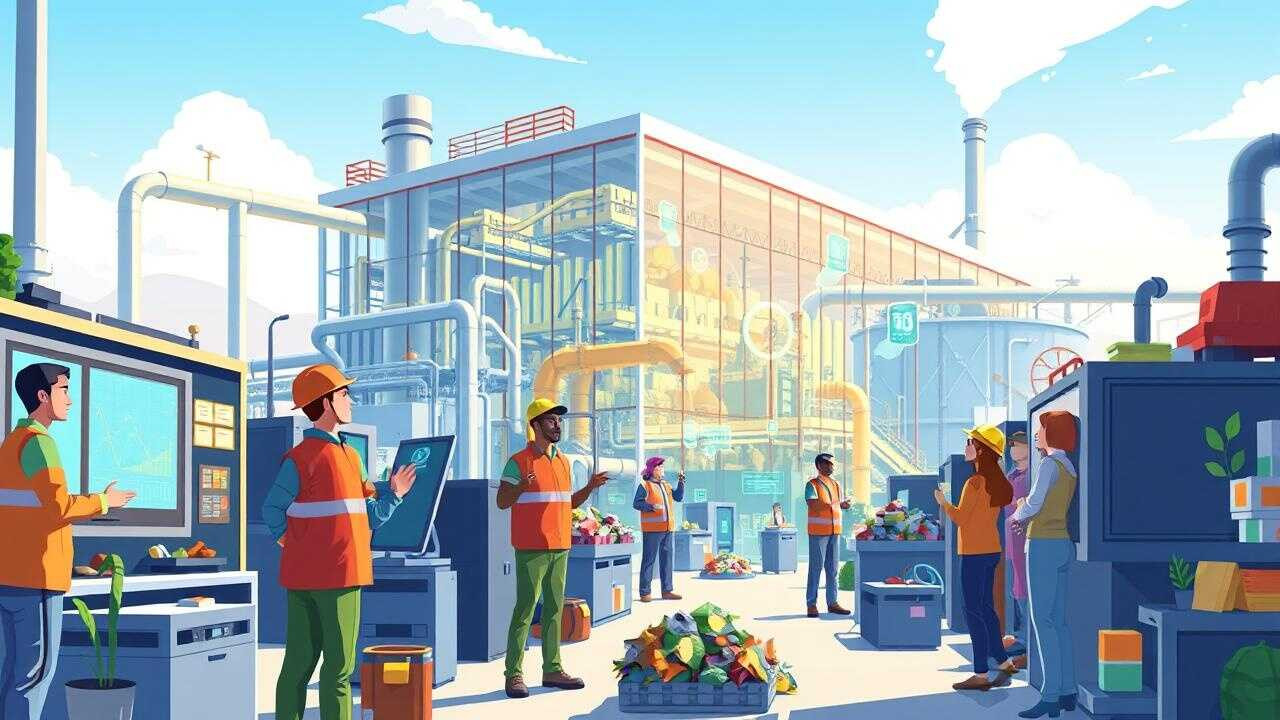MNRE has revised its Waste-to-Energy Programme guidelines to simplify procedures and enhance transparency. The new framework links financial support to the actual performance of energy plants, disbursing CFA in stages based on operational milestones. These changes aim to benefit MSMEs, streamline inspections, and contribute to India’s waste management and net-zero emissions goals.
Turning Trash into Treasure: India’s Bold New Bioenergy Play
India’s facing a gargantuan challenge: what to do with the mountains of waste it generates every single day. But what if that challenge could be flipped on its head, transformed into a source of clean, renewable energy? That’s precisely the vision driving the government’s recent overhaul of the Waste-to-Energy (WTE) guidelines. It’s a move designed to unleash a wave of bioenergy projects across the country, and it could be a game-changer for both our environment and our energy security.
For years, the potential of converting municipal solid waste into usable energy has been recognized. However, bureaucratic hurdles and complex approval processes have consistently hampered progress. Projects often languished, caught in a web of red tape, preventing the widespread adoption of this promising technology. Now, things are changing.
Streamlining Approvals for Faster Bioenergy Development
The revised guidelines represent a significant departure from the old ways. One of the most crucial changes is the simplification of the approval process. The aim is to drastically reduce the time it takes to get WTE projects off the ground. This means less paperwork, clearer pathways for approvals, and a more efficient system overall.
Think of it like this: imagine trying to build a house with endless permits and inspections slowing you down at every turn. Now, imagine those roadblocks removed, allowing construction to proceed smoothly and efficiently. That’s the effect these streamlined guidelines are expected to have on the bioenergy sector.
Enhanced Flexibility: Tailoring Solutions to Local Needs
Another key aspect of the updated guidelines is the increased flexibility they offer. Recognizing that every region has unique waste management challenges and energy needs, the government is encouraging a more adaptable approach. This means that WTE projects can now be tailored to suit the specific characteristics of the local environment and the type of waste available.
This flexibility extends to the technologies used. Previously, rigid guidelines may have favored certain technologies over others, even if they weren’t the most suitable for a particular location. Now, project developers have greater freedom to choose the best technology for the job, whether it’s incineration, gasification, or anaerobic digestion.

Financial Incentives: Fueling the Bioenergy Revolution
Of course, simplifying regulations is only part of the equation. To truly unlock the potential of WTE, financial incentives are also essential. The revised guidelines are expected to include provisions for financial support, making these projects more economically viable and attractive to investors. This could involve subsidies, tax breaks, or other forms of financial assistance.
These incentives are crucial for attracting private sector investment, which is vital for scaling up WTE infrastructure across the country. By reducing the financial risks associated with these projects, the government hopes to encourage entrepreneurs and businesses to embrace this innovative approach to waste management and energy production.
The Road Ahead for Bioenergy in India
The revised WTE guidelines represent a significant step forward in India’s quest for cleaner energy and more sustainable waste management practices. By streamlining approvals, boosting flexibility, and providing financial incentives, the government is creating a more favorable environment for bioenergy projects to thrive.
This initiative has the potential to create jobs, reduce greenhouse gas emissions, and improve public health. It’s a win-win scenario for the environment and the economy. Moreover, with the increasing focus on renewable energy sources and the urgent need to address the growing waste problem, WTE is poised to play a crucial role in India’s energy future.
The impact of these changes remains to be fully seen, but the signs are encouraging. By removing the barriers that have long hindered the development of WTE, India is paving the way for a cleaner, greener, and more sustainable future. The future depends on embracing forward-thinking policies like these and proactively managing our waste streams while simultaneously generating clean energy. If you’re interested in related topics, check out our article on the [future of renewable energy in India](internal-link).
In conclusion, India’s revised Waste-to-Energy guidelines mark a pivotal moment in the nation’s journey toward sustainable development. By fostering a more streamlined, flexible, and incentivized ecosystem for bioenergy projects, the country is strategically positioning itself to transform waste into a valuable resource, powering a cleaner and more prosperous future for all.







